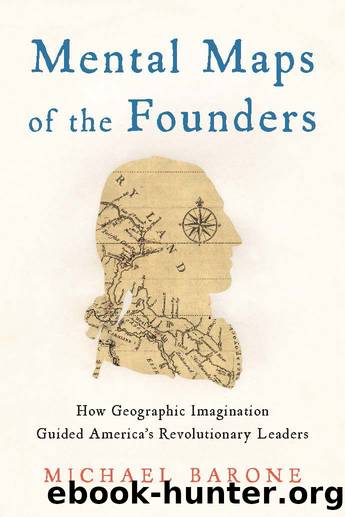Mental Maps of the Founders by Michael Barone

Author:Michael Barone
Language: eng
Format: epub
Publisher: Encounter Books
* * *
New York with its polyglot population and its varied lineages, in contrast to colonial ports like Boston and Charleston with their long-established and interconnected elites, provided newcomers with plenty of avenues in which to rise. But its diverse cultures also made it a cockpit of argument, and on no issue more than whether to protest and sever links with Britain. As the British military historian Piers Mackesy observes, the colonies were split on ethnic lines. âThe [Loyalist] Tories were weakest where the colonists were of the purest English stock. In New England they may have been scarcely a tenth of the population; in the South a quarter or third; but in the Middle Colonies including New York perhaps a half.â30 So if Hamilton encountered âtremendous revolutionary fermentâ and âsome of the coloniesâ most eloquent agitators and outspoken newspapersâ in the cityâs two square miles south of Kingâs College, he was also exposed to âa vocal Tory populationâ in which, as he remembered later, ânear one half of them were avowed more attached to Great Britain than to their liberty.31
Hamilton left no doubt which side he was on. In âthe virulent clash of Tories and Whigsâ he unstintingly opposed the former and supported the latter, as in his pamphlet denigrating Seabury and denouncing his theories.32 In April 1775, after news of the armed clashes at Lexington and Concord reached New York, he joined a Patriot militia and intensively studied military drills, tactics, technology, and strategy. Yet in May 1775, when a group of Patriots tried to seize the collegeâs staunchly Loyalist president, Myles Cooper, Hamilton stood outside his door while Cooper escaped to the waterfront, where he fled in a Britain-bound ship. Hamilton had shown himself as âa committed revolutionary with a profound dread that popular sentiment would boil over into dangerous excess.â33 In June 1775, Hamilton witnessed George Washingtonâs arrival in New York on his way from the Second Continental Congress in Philadelphia to his military command in Massachusetts. Through the next six months, he continued his studies at Kingâs, his drills in the militia, his frequent anonymous pamphleteering, and his dispatches to the Royal Danish American Gazette. In February 1776, he stepped up to become a captain in a New York artillery unit authorized by the Continental Congress, and drilled his soldiers before General Washington during his brief and disastrous campaigning in and around New York. Even as the army was defeated and came close to annihilation, Hamilton had come to Washingtonâs attention, receiving favorable notice as artillery commander during the retreat across New Jersey and then during Washingtonâs Christmas and New Yearâs attacks in Trenton and Princeton. In January 1777, Washington asked Hamilton to join his staff as an aide-de-camp. âIn fewer than five years,â summarizes Chernow, âthe twenty-two-year-old Alexander Hamilton had risen from despondent clerk in St. Croix to one of the aides of Americaâs most eminent man.â34
As Washingtonâs chief aide from March 1777 to February 1781, Hamilton was a front-row witness not only to
Download
This site does not store any files on its server. We only index and link to content provided by other sites. Please contact the content providers to delete copyright contents if any and email us, we'll remove relevant links or contents immediately.
| Historic | Information Systems |
| Regional |
Man-made Catastrophes and Risk Information Concealment by Dmitry Chernov & Didier Sornette(4749)
The Revenge of Geography: What the Map Tells Us About Coming Conflicts and the Battle Against Fate by Kaplan Robert D(3602)
Zero Waste Home by Bea Johnson(3297)
COSMOS by Carl Sagan(2959)
In a Sunburned Country by Bill Bryson(2953)
Good by S. Walden(2920)
The Fate of Rome: Climate, Disease, and the End of an Empire (The Princeton History of the Ancient World) by Kyle Harper(2443)
Camino Island by John Grisham(2391)
A Wilder Time by William E. Glassley(2367)
Organic Mushroom Farming and Mycoremediation by Tradd Cotter(2314)
Human Dynamics Research in Smart and Connected Communities by Shih-Lung Shaw & Daniel Sui(2181)
The Ogre by Doug Scott(2120)
Energy Myths and Realities by Vaclav Smil(2066)
The Traveler's Gift by Andy Andrews(2017)
Inside the Middle East by Avi Melamed(1946)
Birds of New Guinea by Pratt Thane K.; Beehler Bruce M.; Anderton John C(1915)
Ultimate Navigation Manual by Lyle Brotherton(1770)
A History of Warfare by John Keegan(1722)
And the Band Played On by Randy Shilts(1620)
